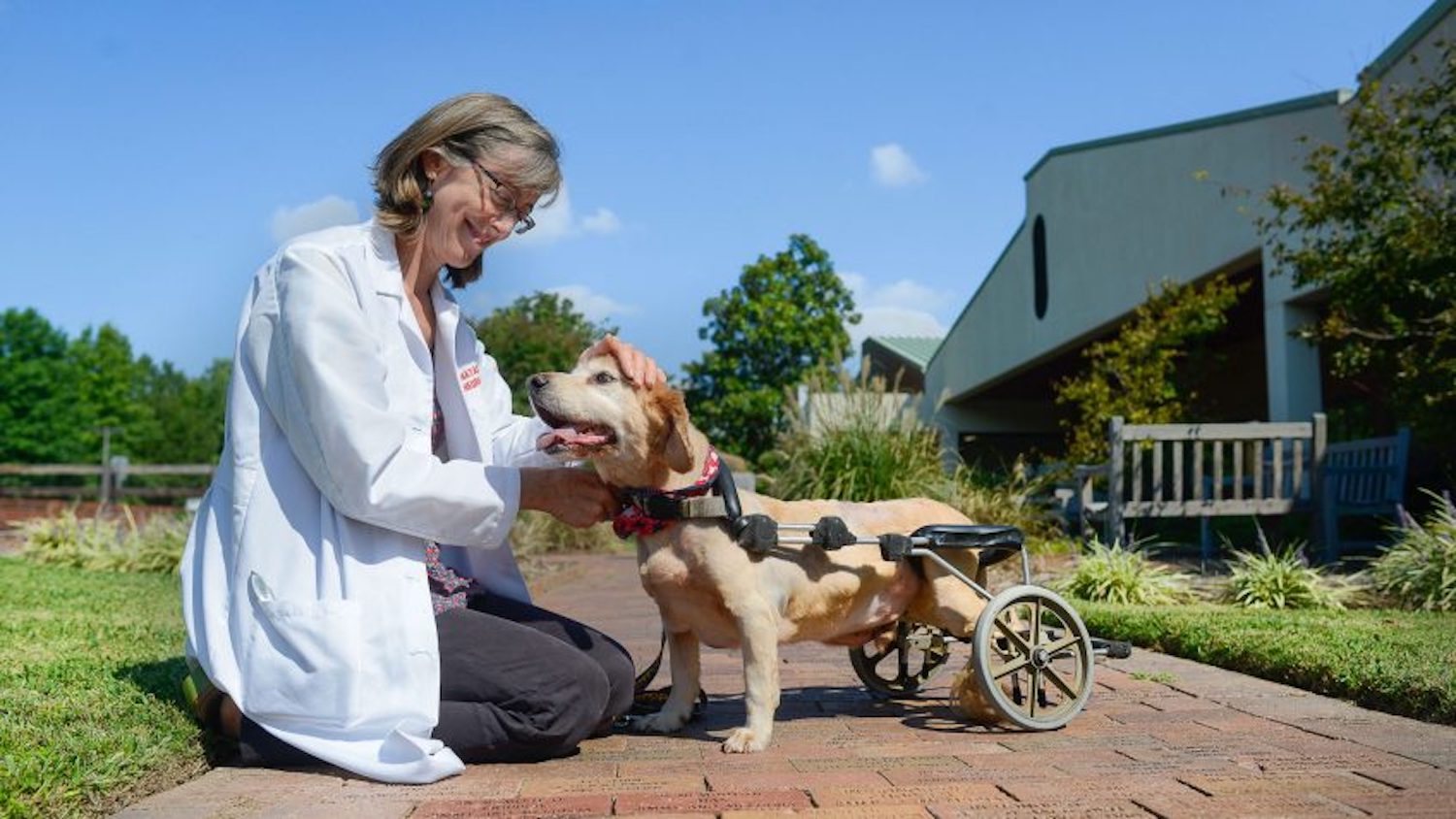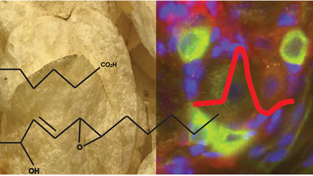The First Annual Faculty Research Symposium of the W.M. Keck Center for Behavioral Biology
by Leslie Wilson and Jaime Willett
The 1st annual Faculty Research Symposium of the W.M. Keck Center for Behavioral Biology was held on Friday, December 2nd in the Stanley Stephens Room at NC State. The Symposium consisted of 20 faculty research talks, broken up into 4 sessions, from 7 departments and 5 colleges across NC State. The symposium was held to promote discussion and interaction among members of the Keck Center and to help build the community of behavioral biologists at NC State. For these reasons, the faculty presentations were focused on new and unpublished work.
It was an extremely diverse day of presentations, ranging in topics such as neuronal control of artificial limbs, to the plasticity of the reproductive potential in honey bees. The event was a huge success and another one will be planned for next year.
Welcoming remarks were given by Keck Center Director, Dr. Robert Anholt, in which he introduced the symposium and thanked the attendees for their participation. Session 1 was moderated by Dr. Coby Schal. The first session was mostly genetic-based topics with a diverse range in application topics, from invasive species eradication to monogamy in mammals. The first presentation of the day was given by Dr. Will Kimler. Dr. Kimler gave a historical view of evolution and behavior. He presented on how evolution is a branching descent through natural selection, which was described by Darwin in the 1860s. He then touched on how adaptive evolution does only occur through the physical characteristics of a species, but also the behavioral ones. He stated that the new molecular tools, developed over the last 30 years, have greatly expanded the capability for evolutionary and genetic studies.
After Kimler, Dr. Trudy Mackay introduced quantitative trait genetics, describing the genetic variation of traits and what evolutionary forces are responsible for these variations. Dr. Marcé Lorenzen described her work uncovering a Medea (Maternal Effect Dominant Embryonic Arrest) gene within red flower beetles. In species that have a Medea gene, only the offspring who inherit Medea will survive, providing a tool for genetic pest control. Lorenzen has been using newly developed biological tools to determine which specific gene sequence is responsible for the Medea traits within these beetles. After Lorenzen, Dr. John Godwin talked about methods to eradicate invasive mice on islands. Godwin explores how to implement genetic biocontrol of mice on islands as an alternative to killing with bait. The last speaker of the session was Dr. Lisa McGraw, who studies the neurogenetic architecture of monogamy. McGraw uses a model species of prairie voles, who are one of the few species known to form pair bonds with their partners. She studies individual variations in the propensity of these voles to be monogamous and if this has an effect on other behavioral characteristics. At the end of session 1 there was a coffee and tea break followed by open discussion and questions for the speakers.
Session 2 was moderated by Trudy Mackay and started with Dr. Brian Langerhans, who gave a talk on the phenotypic differences that occur within mosquitofish in the Bahamas with and without predator threats. Specifically, he analyzes differences in mating success and courtship of these fish. After Langerhans, Dr. Reade Roberts presented a new story on the genetic makeup of people with smelly armpits and wet earwax versus people with dry earwax and non-smelly armpits. Roberts has been collaborating with multiple laboratories and sampled 70+ people to analyze genetic trends in these fragrant data. At the end of his talk he presented data suggesting that bacteria found in your armpit may make you more or less susceptible to be bitten by a mosquito. This intriguing presentation was followed by many questions and discussion from the audience. After Roberts, Dr. Russell Borski described the relation between leptin and glucocorticoid levels in tilapia fish with stress responses.
As lunchtime was approaching, the pleasant aroma of pizza was complemented with a presentation given by Dr. Coby Schal on bedbugs. Schal has been studying alternative methods to address bedbug infestations. The current methods involve heat, fumigation, and do-it-yourself methods; however, these are either very expensive or ineffective. Schal is studying the components necessary to develop proper baits for bedbug infestations based on the behavioral responses from the bedbugs towards certain compounds. Dr. David Tarpy finished up session 2 with a presentation on the plasticity of caste determination in honey bees. Tarpy has been experimenting with varying the diets of honey bee larva to make intermediate castes of honey bees.
Session 3 of the symposium was introduced and moderated by Dr. Fred Gould. Dr. John Meitzen opened the session with a talk overviewing his lab’s ongoing investigation of the intersecting roles of estradiol and biological sex on the function of striatal neurons. The Meitzen lab has identified sub-region specific sex differences in striatal neuron electrophysiological properties in pre-pubertal rats and is currently investigating the persistence of these differences into adulthood as well as the modulatory effects of unstable neuroendocrine state.
Dr. Helen Huang then discussed her lab’s progress in improving human-machine symbiotic systems through development of bidirectional neural-machine interfaces to better translate neural will into artificial limb action in her talk Towards Bionic Limbs: Neural Control of Artificial Limbs. Dr. Leslie Sombers presented electroanalytical approaches developed and expanded upon in her lab, which enable for monitoring neuroenergetic and neurochemical dynamics in living brain tissue and intact brain tissue in behaving animals – providing examples from research conducted in her lab in which the neurochemical dynamics underlying specific behaviors can be analyzed using these techniques. Dr. Santosh Mishra shared recent findings in his ongoing work elucidating the neurocircuitry underlying chronic allergic itch sensation that implicate periostin and the ITGB3 integrin receptor as a novel ligand and receptor, respectively, acting within the itch pathway, which may serve as potential new targets for anti-chronic allergic itch therapies.
Dr. Troy Ghashghaei concluded the third session with a talk about his lab’s work investigating how hedonic olfactory learning is developmentally regulated in the mouse forebrain using DREADDs (Designer Receptors Exclusively Activated by Designer Drugs) to target olfactory bulb neurons born at different times during development. Ghashghaei’s research indicates that the neural pathways involved in different olfactory behaviors are organized at different developmental time points.
The final session 4 was moderated by Dr. John Godwin. Dr. Heather Patisaul descirbed her lab’s findings on the bioaccumulation and endocrine disrupting effects of the flame retardant chemical Firemaster 550 and introduced the placenta as a new frontier for neuroendocrine disruption research. Dr. Fred Gould followed with a talk entitled “Can genes drive safely?”, in which he discussed the potential for and limitations of using gene drive systems to generate transgenic pests as a new form of pest control. Dr. David Aylor presented his lab’s research using a genetic reference population of mice, the Collaborative Cross, to investigate the genetics of susceptibility to exposure to diethylstilbestrol (DES). Exposure to DES, a drug prescribed to women who had suffered a prior miscarriage, has been linked to infertility and cancer. The Aylor lab is working to identify genetic susceptibilities, such as a pre-cancerous gene profile using the Collaborative Cross mice.
Dr. Michael Cowley discussed his lab’s research on the interaction of the environment and the epigenome. Specifically, how exposure to a maternal high-fat diet during early life can increase the risk of hepatic steatosis in offspring. Finally, Dr. Robert Anholt concluded the fourth and final session with a talk entitled “Functional reconstruction of the evolution of chemoreceptor gene clusters in Drosophila” in which he discussed his lab’s approach using CRISPR to systematically and functionally characterize different gene clusters and their individual constituents for chemosensation-related phenotypes through interrogation of these phenotypes after excision of gene clusters and systematic reinsertion of gene cluster constituents.
The symposium concluded with a lively discussion amongst attendees regarding the future of the Keck Center for Behavioral Biology. Anholt cited the conclusions of the 2013 5-year review and invited suggestions from attendees on what changes could be implemented to optimize the Center. Attendees were invited to respond to the following questions: Should the Keck Center continue to exist? What should we do differently to reinvigorate the Center? Should the director of the Keck Center be replaced with new leadership? To what extent should governance for the Center change? There was an enthusiastic affirmation across attendees of the symposium that the Keck Center should continue to exist. Attendees responded positively to the suggestion of reviving the Keck Center training grant program as well as involving students in the leadership and governance of the Center.
Overall, the discussion concluded with a general consensus that collaboration and communication within the Keck Center needs to be further consolidated and student leadership roles created to boost student involvement. To adjourn the first annual Keck Center Faculty Research Symposium, Anholt thanked all presenters and attendees for participating and invited all speakers to gather for dinner at Château MacAnholt.
Originally printed in The Signal, issue 18.5
Download PDF
- Categories:


